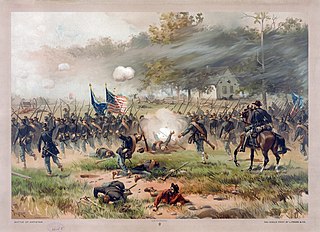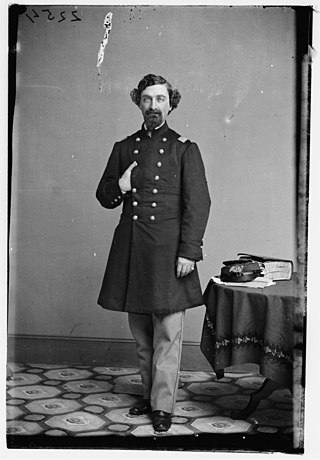| Date | |
|---|
| May 21, 1861 | The Regiment Was Organized with Henry W. Slocum as Colonel |
| Joseph J. Chambers as Lieutenant Colonel, and Joseph J. Bartlett as Major |
| June 15, 1861 | The Regiment mustered into Federal Service. |
| July 10, 1861 | Left State for Washington, D.C. by rail via Harrisburg and Baltimore. |
| Attached to Porter's Brigade, Hunter's Division, McDowell's Army of Northeast Virginia |
| July 16–21, 1861 | Advance on Manassas, Virginia |
| July 21, 1861 | Battle of Bull Run |
| The regiment lost 1 officer and 25 men killed; Colonel Henry W. Slocum, another officer and 42 men wounded; and 60 men missing. Major Joseph J. Bartlett took command of the regiment when Colonel Slocum was wounded. |
| August 1861 | Duty in the Defenses of Washington, D.C. attached to Heintzelman's Brigade, Division of the Potomac |
| August 13, 1861 | Lieutenant Colonel Joseph J. Chambers Resigns |
| September 1, 1861 | Colonel Henry W. Slocum was promoted to brigadier general, Major Joseph J. Bartlett to Colonel, Captain Alexander D. Adams of Company B to Lieutenant Colonel and Captain Curtis C. Gardiner of Company I to major |
| October 1861 | Attached to Slocum's Brigade, Franklin's Division, Army of the Potomac |
| October 3, 1861 | Expedition to Pohick Church |
| March 1862 | Attached to Slocum's 2nd Brigade, Franklin's 1st Division, 1st Army Corps, Army of the Potomac |
| March 10–15, 1862 | Advance on Manassas, Virginia |
| April 4–12, 1862 | McDowell's advance on Fredericksburg |
| April 22, 1862 | Ordered to the Peninsula, Virginia |
| April 24-May 4, 1862 | Siege of Yorktown, Virginia on transports. |
| Attached to 2nd Brigade, 1st Division, 6th Army Corps |
| May 7–8, 1862 | West Point |
| May 20, 1862 | Near Mechanicsville |
| June 25-July 1, 1862 | Seven days before Richmond |
| The regiment lost 1 officer and 34 men killed or mortally wounded, 9 officers and 100 men wounded, and 18 men missing. |
| June 27, 1862 | Gaines' Mill and Chickahominy |
| June 30, 1862 | White Oak Swamp and Glendale |
| July 1, 1862 | Malvern Hill |
| July 1862 | At Harrison's Landing |
| July 24, 1862 | Major Curtis C. Gardiner resigns, Captain Joseph H. Bodin of Company H promoted to major. |
| August 16–28, 1862 | Movement to Fortress Monroe, then to Centreville. |
| August 28–31, 1862 | In works at Centreville |
| September 1, 1862 | Cover Pope's retreat to Fairfax Court House |
| September 6, 1862 | Maryland Campaign Col Joseph J. Bartlett in charge of the whole Brigade. |
| September 14, 1862 | Crampton's Gap, South Mountain led by Lieutenant Colonel Alexander D. Adams in the Assault |
| The regiment lost 9 men killed or mortally wounded, and 2 officers and 22 men wounded. |
| September 16–17, 1862 | Battle of Antietam also led by Lieutenant Colonel Alexander D. Adams no real engagement in the Battle. |
| September 1861 | Duty in Maryland |
| October 29 - November 19, 1862 | Movement to Falmouth, Virginia |
| October 4–8, 1862 | Colonel Joseph J. Bartlett promoted to brigadier general, Lieutenant Colonel Alexander D. Adams to colonel, Major Joseph H. Bodin to lieutenant colonel and Captain George G. Wanzer of Company E promoted to major. |
| December 12–15, 1862 | Battle of Fredericksburg, Virginia |
| January 20–24, 1863 | "Mud March" |
| February 1863 | At Falmouth |
| April 27-May 6, 1863 | Chancellorsville Campaign |
| April 29-May 2, 1863 | Operations about Franklin's Crossing |
| May 3, 1863 | Marye's Heights, Fredericksburg |
| May 3–4, 1863 | Salem Heights |
| May 4, 1863 | Banks' Ford |
| May 31, 1863 | Mustered out, expiration of term, under Colonel Alexander D. Adams, Lieutenant Colonel Joseph H. Bodin and Major George G. Wanzer. Three years' men transferred to 121st Regiment New York Infantry. |






